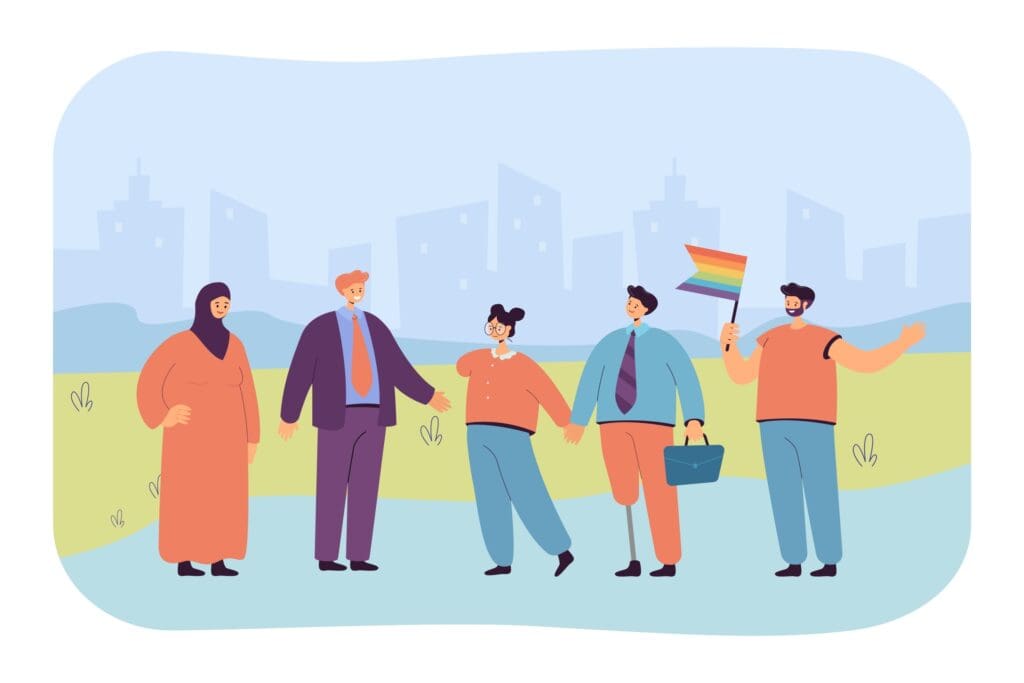Despite efforts to implement pay transparency across the U.S. in recent years, progress to eliminate the wage gap has stalled.
By Ruth Thomas
Even as women have made immense strides to equality in the American workplace, the simple reality persists that female employees overall make less money than men. The gender pay gap has remained apparent across industries and demographics, resisting any one explanation or intervention that would solve the difference between men and women’s salaries.
Although a growing number of employers have adapted their compensation strategies to embrace pay equity, alongside a raft of recent state laws aimed at increasing pay transparency, the pay discrepancy between genders continues in 2024. It remains the case in industries where men still dominate the highest-earning positions and women hold less prestigious roles, as well as in occupations where men and women hold the same positions or perform substantially equivalent work yet receive different pay.
While the remedies for the gender pay gap may still be elusive, HR leaders and executives are leveraging sophisticated analysis to understand how these differences in pay manifest themselves in the workplace and change over time. Just as women face different challenges based on their occupation and background, so too does the gender pay gap present unique difficulties in different working situations and adversely affect certain groups of women.
In a survey of over 627,000 people between January 2022 and 2024, Payscale identifies a myriad of ways that the gender pay gap plays out in various industries and among a diverse group of workers. It’s a telling look at the state of gender equality in the nation, highlighting where more efforts are needed to close the gap, particularly for HR leaders in search of those critical moments of disparity across the talent lifecycle.
The Persistence of the Gender Pay Gap
When looking at the median salary of all men and women regardless of variables such as education or specific occupation—a measure known as the uncontrolled gender pay gap—women earn only $0.83 for every $1 that a man makes. That difference closes to women making $0.99 for every dollar a man earns when the data is controlled and compared in jobs where experience and responsibilities are equal, but this smaller gap still results in significant losses over the length of a career. There should be no gap at all.
Parental status is a primary driver of the gender pay gap, with women being penalized for having children—or even the possibility that they may want children in the future.
The pay gap isn’t relegated to just one area of the economy, but instead can impact women working in industries ranging from finance to construction and healthcare to education. The most drastic differences in salary, however, tend to present themselves in occupations which traditionally have stronger gender norms associated with them. Several of the jobs with the widest pay gaps are in male-dominated fields such as manufacturing, sales, and organized religion. The employment category of drivers and sales workers, which includes long-haul truck drivers, has the widest gap: Women in those jobs make only $0.83 for every dollar men earn, even when controlled for factors like title, age, and location.
Troublingly, an increase in education does not lead to closing the gender pay gap. When controlled for other factors, women with degrees ranging from a high school education to doctorates and law degrees all face similar pay gaps compared with men who have corresponding qualifications. This gap hasn’t closed at all in the past year.
Age, Parental Status, and the “Childbearing Penalty” Widens the Gap
Much as gender norms and biases in industries appear to dictate some differences in the pay gap, other factors such as age and parental status also contribute to pay differences. The pay gap is wider for women in older age brackets, for instance, with women aged 45 and above overall making drastically less per dollar than men of the same age group.
Whether or not a person has children can also exacerbate the gender pay gap. There is a stark difference between what male parents and female parents make, a discrepancy that is part of what’s often called the “motherhood penalty”—a phenomenon where women’s pay growth lags after having children. Women may also face a “childbearing penalty,” in which employers might disadvantage women because of the biased assumption they might one day have children and become less dedicated to work.
Meanwhile, Payscale’s research shows that men don’t see any similar drop-off in wages after having children and actually experience an opposite trend. Male parents earn more across the board than their counterparts who don’t have kids, including 2% more than men with similar jobs and qualifications who are childless. These findings are part of a growing body of research that suggests parental status is a primary driver of the gender pay gap, with women being penalized for having children—or even the possibility that they may want children in the future.
Women who work from home make only $0.79 for every dollar that a man with the same remote work status makes.
One of the more interesting differences in the data doesn’t concern the kind of work that defines an occupation, but where its employees are allowed to do it. The COVID-19 pandemic led to a sharp rise in remote work that has enabled more flexibility for employees, but the shift to work-from-home arrangements also appears to have impacted the gender pay gap: Women who work from home make only $0.79 for every dollar that a man with the same remote work status makes, in the uncontrolled data from Payscale’s Gender Pay Gap Report. Although there are many reasons why a woman may work remotely, it’s possible that women who stay at home for childcare reasons may be getting penalized for not commuting into the office.
The Road Ahead to Pay Equity
Despite difficulties in closing the gender pay gap, there are still reasons to be optimistic. The rise of pay transparency laws in recent years have helped shed light on hiring practices, potentially helping women and minorities that often face biases and disadvantages in salary negotiations. Pay gaps for some women of color have also been closing at a faster rate than overall trends, with Black women, American Indian women, and Hispanic women who hold bachelor’s degrees or higher levels of education all seeing positive shifts toward pay equity.
The state of the gender pay gap in 2024 shows that there is still more work to be done. HR and business leaders have a critical role to play and should continue to dedicate resources to pay equity. The goal of ensuring equal pay for equal work, as well as providing equal opportunities regardless of gender, is one that will take a broader effort to make society value women’s contributions in the workforce the same as men’s.
Ruth Thomas is pay equity strategist for Payscale.
















